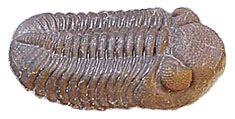Adventures on Earth column in The Review for Nov. 3, 2010.
By George E. Beetham Jr.
When Eyjafjalla in Iceland erupted last spring, it was assumed by volcanologists that a nearby volcano would follow. Katla still has not stirred to life as expected, but another volcano is rumbling.
Grimsvotn is a volcano that lies under an ice sheet (jokull in Icelandic), just as Eyjafjalla and Katla do. Grimsvotn is located northeast of Katla under an ice sheet that is far larger.
On Oct. 2 and 3, tremors were detected under Grimsvotn. That was followed by a small earthquake last Thursday, then flooding in the Gigjukvisl River.
The flood was caused by meltwater from the ice sheet, the melting caused by heat rising from a magma chamber under Grimsvotn.
Grimsvotn last erupted in 2004, then causing disruption of air traffic in Europe as the ash plume flowing from Grimsvotn drifted southeastward.
At that time there was no appreciable melting of ice, but a 1996 eruption did cause a meltwater flood.
These floods are known as glacial bursts (jokulhlaup in Icelandic). In 1996, the glacial burst occurred weeks after the eruption ended, flooding downstream to the sea. That glacial burst was predicted, allowing authorities to shut down the Icelandic ring road that circles the island.
Iceland is located athwart the Mid-Atlantic Ridge, a chain of volcanic fissures that spread outward, moving the ocean plates of the Atlantic away from the fissures.
The ridge surfaces on a peninsula southeast of the capitol city of Reykjavik, slicing northeastward, then eastward then northward to split the island. An arm of the fissures extends southward, and it is on this arm that Grimsvotn, Eyjafjalla, and Katla are located. Farther to the southwest is Surtsey, a volcanic island which emerged from the sea on Nov. 14, 1963.
Volcanologists relatively recently determined that water and volcanoes are an explosive mix. When water seeps into the volcano it is superheated, increasing pressure. When the pressure builds up sufficiently, there is a violent explosion with ejection of masses of volcanic ash, rock, and lava.
It was this kind of eruption that blew the top off Mount St. Helens in 1980 and Pinatubo in the Philippines in 1991. It was also the cause of the Eyjafjalla eruption last spring as well as previous eruptions of Katla.
In all three Icelandic cases, the volcanoes are topped with an ice field, the source of water once magma builds up and releases heat.
What happens next at Grimsvotn is anybody’s guess. Volcanologist think it will erupt violently, but a violent eruption of Katla was expected in the wake of Eyjafjalla and it has not happened.
The eruption of Eyjafjalla last spring spewed tons of ash into the atmosphere, shutting down air travel over Europe. When volcanic ash is ingested by jet engines, it can destroy the engine and cause the plane to crash.
That disruption of air travel cost money to airlines and to businesses dependent on air travel. An eruption of Grimsvotn could do the same thing, perhaps for a longer time.
Meanwhile, flooding from the volcano is an immediate threat to Iceland’s ring road and bridges. The ring road bridge over a sandbar was washed away in the 1996 flood.
Because of its location astride the Mid-Atlantic Ridge, Iceland and its volcanoes will continue to threaten air traffic disruption over Europe, as well as flooding on the island nation.
Iceland has been called a land of fire and ice. Where the two meet, things are bound to happen.

No comments:
Post a Comment